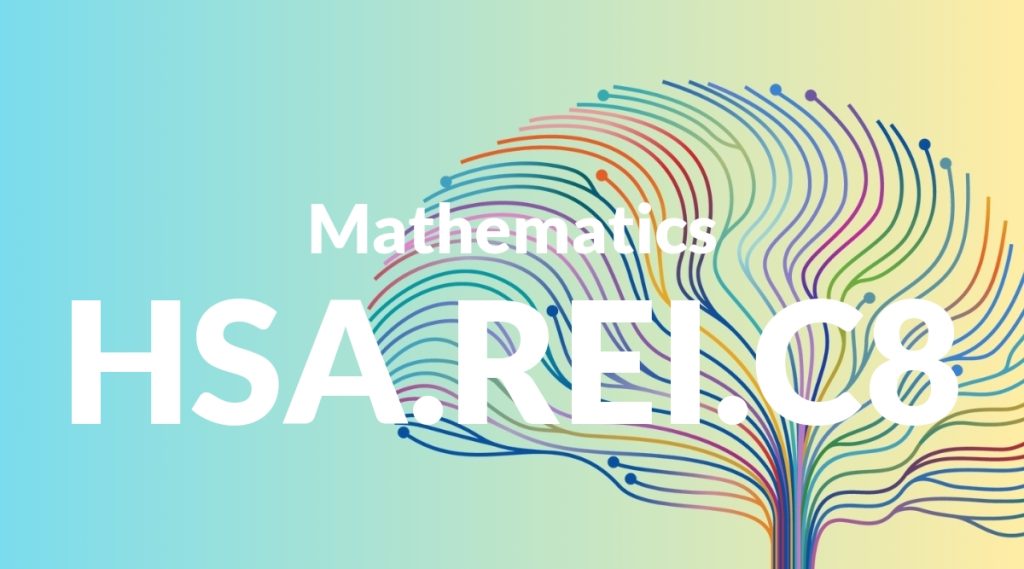Standard: HSA.REI.C8 – (+) Represent a system of linear equations as a single matrix equation in a vector variable.
Grade level: High School: Algebra
Subject: Mathematics
Domain: Reasoning with Equations & Inequalities
Teacher Overview
This standard focuses on representing systems of linear equations as single matrix equations in a vector variable. This is a foundational skill in algebra that prepares students for more advanced topics in linear algebra and its applications in various fields such as engineering, physics, and computer science. Students should have a solid understanding of solving linear equations, systems of equations, and basic matrix operations. They should also be comfortable with the concept of vectors and their properties.
Mastering this standard will enable students to solve more complex systems of equations and apply matrix methods to broader mathematical and real-world problems, enhancing their problem-solving toolkit.
Common Misconception 1
One common misconception is that students believe a system of linear equations cannot be represented as a matrix equation. This misconception arises from a lack of understanding of how equations can be translated into matrix form.
Intervention 1
To address this misconception, use visual aids and step-by-step examples to show the translation process. Demonstrate how each equation in the system corresponds to a row in the matrix and how the coefficients align with matrix elements.
Common Misconception 2
Another common misconception is that students often confuse the order of operations when multiplying matrices with vectors. They might incorrectly apply scalar multiplication rules or mix up row and column operations.
Intervention 2
Provide practice problems that emphasize the correct order of matrix and vector multiplication. Use guided solutions to walk through each step of the process, highlighting common pitfalls and correct techniques.
Prerequisite Knowledge
Students should understand basic linear equations, systems of linear equations, and matrix operations including addition, subtraction, and multiplication.
Subsequent Knowledge
Students will develop skills in solving more complex systems of equations, including those involving non-linear equations, and will be able to apply matrix methods to broader mathematical and real-world problems.
Instructional Activities
- Interactive matrix manipulation exercises
- Real-world problem-solving scenarios involving systems of equations
- Group activities to translate word problems into matrix equations
- Use of graphing calculators or software for matrix operations
- Quizzes and assessments focusing on matrix representation and operations




